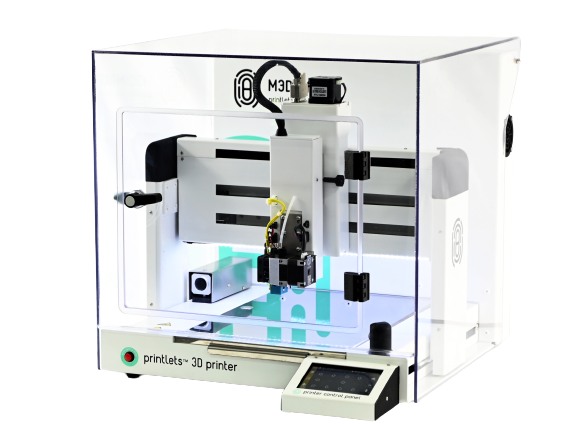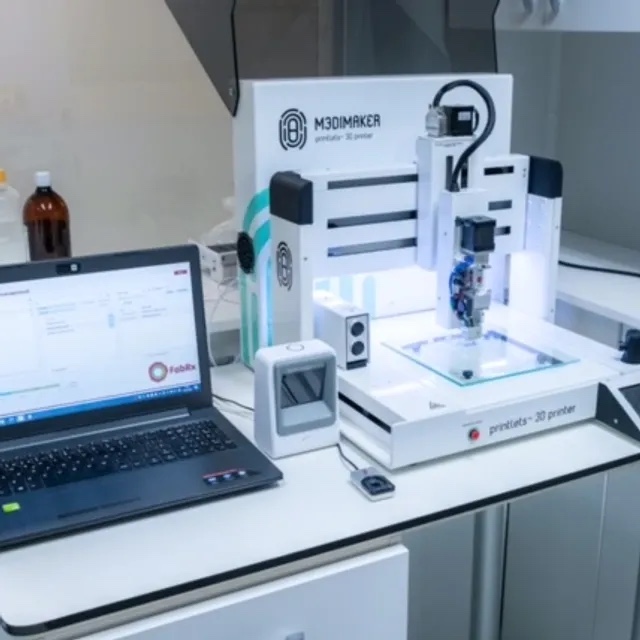InfraTrac, a Maryland-based manufacturer of quality assurance (QA) solutions for 3D printed products, has been awarded a Phase II Small Business Innovation Research (SBIR) grant from the National Institute of Standards and Technology (NIST), for its near-infrared (NIR) spectroscopy device. The two-year contract for an undisclosed amount will support InfraTrac’s further development, and ultimately commercialization, of the NIR spectroscopy system.
InfraTrac completed work on Phase I of the contract earlier this year, work which the company says successfully demonstrated that the product allows pharmacy staff to perform QA on “locally-produced 3D printed medication”, specifically by guaranteeing that each dose has been correctly formulated. According to InfraTrac, the purpose of the research in Phase II will be to use NIR “to detect wrong drugs, wrong doses, wrong combinations, and failed prints”.
For the Phase II project, InfraTrac is verifying the efficacy of its system with the M3DIMAKER 1, a printer made by a UK company, FabRx. Notably, FabRx makes three unique and interchangeable printheads for its M3DIMAKER platforms, including Semi Solid Extrusion (SSE), Fused Deposition Modeling (FDM), and Direct Powder Extrusion (DPE). Thus, this allows InfraTrac to test its NIR spectroscopy device’s viability for a variety of different feedstocks and printing techniques.

In a press release about the Phase II SBIR grant from the NIST, Sharon Flank, InfraTrac’s founder and CEO, said, “We are thrilled to have NIST’s support as we continue to develop better protections for patients receiving 3D printed medications. We intend to expand our collaboration with the University of Maryland’s School of Pharmacy as we deploy the NIST grant to bring fast, easy, and highly reliable quality controls into point-of-care 3DP drug production.”

Aside from the sheer fact that this serves as evidence that add-on technologies for 3D printed pharmaceuticals are already being commercialized, suggesting the entire market segment is reaching a new level of technological maturity, the most intriguing aspect of this announcement is the idea of “locally-produced” 3D printed drugs. As with most other areas of the additive manufacturing (AM) sector, the potential to produce right at the point of need has been often touted as one of the possible advantages of AM for pharmaceuticals.
But after almost a decade, ZipDose is still the only 3D printed drug with FDA approval on the market, and drugs have only been 3D printed on-site in hospitals and pharmacies in limited instances elsewhere around the world. No one really knows what would happen if the technology were deployed widely at scale in terms of supply chains: whether the norm would be to simply replace existing factory infrastructure, or if printing drugs at the pharmacy might actually become widespread.
It’s interesting, then, that at least one company is developing a product with the NIST with the idea in mind that it will happen on-site, especially considering that this process is devoted to QA. Stringent and reliable QA is obviously an absolute necessity for the 3D printing of drugs to ever become prevalent, and making this as uncomplicated a process as possible with products like what InfraTrac is developing will be vital for it to happen at the point of need.
Subscribe to Our Email Newsletter
Stay up-to-date on all the latest news from the 3D printing industry and receive information and offers from third party vendors.
You May Also Like
New Report: Semiconductor Industry to See $1.4B in 3D Printing Revenues by 2032
“The semiconductor sector has become the most strategically significant area of global industry.” Truer words are hard to come by when it comes to the modern world, and they are...
Will Photonic-Crystal Lasers Revolutionize 3D Printing?
Powder bed fusion (PBF) for metals and polymers predominantly utilizes lasers as the primary heat source. Some directed energy deposition (DED) technologies also employ lasers, while various vat polymerization methods...
3D Printing Unpeeled: Orbex Investment, IndoMIM and HP, Ultrasonic Waves
INDO-MIM has bought three HP Metal Jet S100 printers, operating two in India and one in Texas. This is a win for HP because the company has deep experience in...
3D Printing Webinar and Event Roundup: April 21, 2024
It’s another busy week of webinars and events, starting with Hannover Messe in Germany and continuing with Metalcasting Congress, Chinaplas, TechBlick’s Innovation Festival, and more. Stratasys continues its advanced training...































